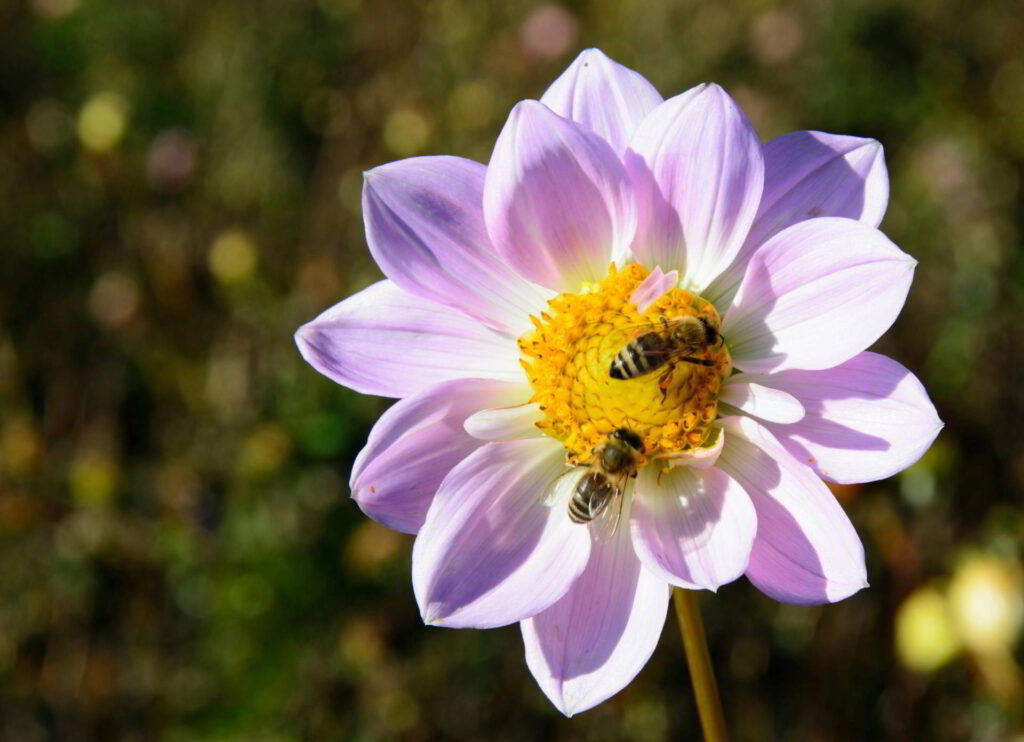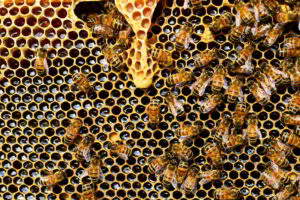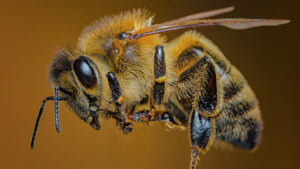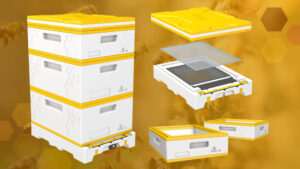Spring Beekeeping Essentials
Spring marks a period of increased activity in beehives, making it an important time for beekeepers to prepare their colonies for the blooming season. This section focuses on acquiring new colonies and understanding honey production and pricing, which are vital for a successful beekeeping season.
Acquiring New Colonies
Spring is the ideal time to establish new honey bee colonies, providing beekeepers with an opportunity to expand their operations (Penn State Extension). There are several methods for acquiring new colonies, each offering its own benefits:
- Established Colonies: Purchasing full-sized, established colonies is a straightforward way to start, as these colonies are already built up and ready to collect nectar.
- Nucleus Colonies (Nucs): Nucs typically contain five frames of bees, brood, pollen, and honey, plus a mated queen. They are a great way to start with a small, manageable number of bees that will grow over time.
- Package Bees: Package bees are bought by weight, often in 2-3 pound increments, and include a mated queen. They allow beekeepers to create new colonies in existing hives.
- Swarms: Capturing wild swarms is another method, though it can be less reliable due to the unknown health and genetics of the swarm.
| Colony Acquisition Method | Advantages | Disadvantages |
|---|---|---|
| Established Colonies | Immediate productivity; little setup required | Higher cost; potential for hidden problems |
| Nucleus Colonies (Nucs) | Balanced start; locally sourced queens | Limited availability; higher price per bee |
| Package Bees | Flexibility to introduce into existing hives | Requires more initial care and feeding |
| Swarms | Free; strong genetics | Variable quality and genetics; unknown health risks |
For a more detailed checklist on acquiring colonies, refer to our spring beekeeping checklist.
Honey Production and Pricing
Understanding honey production and its market pricing is crucial for beekeepers aiming to maximize their harvest.
The United States produces approximately 125 million pounds of honey annually, with prices depending on various factors, including honey’s color and quality. On average, wholesale prices are around $2.98 per pound, with retail prices varying based on color categories like water white, extra white, white, extra light amber, light amber, and dark amber.
Bee nectar availability in spring significantly impacts honey production. Ensuring that hives are strong and healthy at the start of the blooming season enables bees to take full advantage of the nectar flow, resulting in higher yields.
| Honey Color Category | Typical Wholesale Price per Pound |
|---|---|
| Water White | $3.10 |
| Extra White | $3.00 |
| White | $2.90 |
| Extra Light Amber | $2.80 |
| Light Amber | $2.70 |
| Dark Amber | $2.50 |
Keep in mind that honey prices fluctuate based on regional demand and supply dynamics. For a deeper dive into advanced practices for honey production, visit our guide on spring beekeeping practices.
By preparing for the active blooming season with the right spring beekeeping techniques, beekeepers can ensure both the health of their colonies and the success of their honey production.
Importance of Bee Pollination
Pollination by bees plays a crucial role in agriculture and biodiversity. Understanding their contributions and the challenges they face is essential for beekeepers preparing for the active spring season.
Agricultural Contributions
Honey bees are essential pollinators for many crops, significantly enhancing the production of fruits, vegetables, legumes, nuts, and seeds. The cost of these crops would be significantly higher without the pollination services provided by bees (Penn State Extension). Here’s a table that highlights key agricultural contributions made by bees:
| Crop Type | Pollination Contribution |
|---|---|
| Fruits | Apples, blueberries, cherries, etc. |
| Vegetables | Cucumbers, squash, tomatoes, etc. |
| Legumes | Beans, lentils, peas, etc. |
| Nuts | Almonds, walnuts, etc. |
| Seeds | Sunflower, canola, etc. |
Understanding the importance of bees in agriculture helps beekeepers realize the impact of their efforts on food production. Pollination not only increases crop yields but also improves the quality of the produce. For more on preparing your bees for spring activities, check out our spring beekeeping practices guide.
Impact of Colony Collapse Disorder
Colony Collapse Disorder (CCD) poses a significant threat to bee populations in North America. CCD is characterized by the sudden and unexplained disappearance of worker bees from a hive, leaving behind the queen and immature bees. Multiple factors contribute to CCD, including mites, diseases, pesticides, environmental stresses, and migratory beekeeping practices.
The decline in bee populations due to CCD affects overall biodiversity and agricultural productivity. Beekeepers need to be aware of the symptoms of CCD and take proactive measures to protect their colonies. Regular spring hive inspection and proper spring varroa management are essential to mitigate potential risks.
To stay informed on the latest spring beekeeping techniques and manage hive health effectively, beekeepers should continuously monitor their colonies and implement best practices. Delving deeper into these issues can help ensure a thriving and productive bee population.
Managing Beekeeping Risks
Spring beekeeping involves several risks that need to be managed effectively to ensure healthy and productive hives. Two critical areas to focus on are insuring beekeeping assets and managing varroa mites.
Insuring Beekeeping Assets
Insuring beekeeping assets is a crucial step in safeguarding investments and providing peace of mind for beekeepers. Beekeepers can insure their honey, pollen collection, wax, and breeding stock through crop insurance programs for apiculture and AGR-Lite policies. These options offer flexible coverage amounts tailored to the beekeeper’s enterprise.
| Insurable Asset | Coverage Type |
|---|---|
| Honey | Crop insurance |
| Pollen | Crop insurance |
| Wax | Crop insurance |
| Breeding Stock | AGR-Lite policies |
By insuring these assets, beekeepers can protect their investments against unforeseen risks such as pests, diseases, and environmental factors. For more on managing risks associated with beekeeping, explore spring beekeeping management and spring beekeeping practices.
Spring Varroa Management
Varroa mites are one of the most significant threats to bee colonies, making effective spring varroa management crucial. As bee populations begin to grow again in spring, it’s an ideal time for applying treatments to control mite populations (NOD Global). Effective varroa management can prevent mite infestations that could otherwise affect honey production and overall colony health.
Beekeepers are advised to rotate treatments in spring and fall, or year to year, to help avoid the development of resistance to treatments in bees (NOD Global).
Common Varroa Treatments
| Treatment Type | Usage Frequency |
|---|---|
| Oxalic Acid | Rotational (Spring and Fall) |
| Formic Acid | Rotational (Spring and Fall) |
| Thymol | Rotational (Alternate Years) |
| Miticides | Rotational (Alternate Years) |
In addition to applying treatments, beekeepers should regularly inspect their colonies for signs of varroa infestation and other diseases such as chalkbrood and sacbrood during the spring buildup period (Bee Management and Bee Health). For more detailed guidelines on preparing your hives, visit our spring beekeeping checklist and spring beekeeping techniques.
By proactively managing risks through insurance and varroa treatments, beekeepers can ensure a thriving and productive beekeeping season.
Spring Hive Preparation
Preparing hives for the active spring season involves removing winter protections and conducting thorough hive inspections. These steps are crucial for ensuring the health and productivity of bee colonies.
Removing Winter Protections
As the weather warms up, one of the first tasks beekeepers need to tackle is removing any winter protections. This includes mouse guards and other barriers used to protect the hive during colder months (Mann Lake Ltd). These protections are no longer necessary as bees start to fly out at least once a week, reducing the risk from mice.
Additionally, this is an ideal time to check the hive to ensure that the bees have enough feed left from the winter months. Ensuring ample supplies supports the colony as they ramp up their activities during spring.
Tasks:
- Remove mouse guards
- Inspect feed levels
- Clean any debris from the hive entrance
For more on managing your hives during spring, see our spring beekeeping checklist.
Hive Inspection Guidelines
Early spring hive inspections are crucial for assessing the health and readiness of the colony. These inspections help beekeepers plan for potential splits or other management practices to control the colony’s size and encourage healthy growth (Mann Lake Ltd).
Key Factors to Inspect:
- Brood pattern: A consistent and healthy brood pattern is a good indicator of a productive queen and a thriving colony.
- Pollen and nectar stores: These are vital for supporting the brood and the overall health of the colony.
- Hive cleanliness: Look for signs of disease or pest infestation.
Early spring inspections should help determine if there are any interventions needed to support the bees, such as adding pollen patties or using internal feeders to prevent starvation.
| Inspection Task | Importance |
|---|---|
| Check Brood Pattern | Indicates queen health and colony productivity |
| Assess Food Stores | Ensures bees have enough nutrition to thrive |
| Clean Hive Entrance | Prevents blockages and promotes air circulation |
| Look for Pests | Early detection helps with timely interventions |
For more elaborate techniques, visit our spring beekeeping practices page.
Preparing your hives for spring involves critical steps that set the foundation for a productive and healthy beekeeping season. By removing winter protections and conducting thorough inspections, beekeepers can ensure their colonies are well-equipped to take full advantage of the spring bloom. For additional resources, check out our comprehensive guide on spring beekeeping management.
Supporting Bee Health in Spring
Healthy bees are essential to a productive beekeeping season. Ensuring they receive proper nutrition and care is key. Below are two strategies for supporting bee health as they ramp up their activity this spring.
Planting Bee-Friendly Flora
Beekeepers can significantly enhance the environment around their hives by planting bee-friendly flora. Encouraging the growth of native flowers, shrubs, and trees provides bees with the nectar and pollen they need throughout the season.
Consider collaborating with local gardening clubs or community groups to promote the planting of these flora. Plants such as lavender, sunflowers, and bee balm are excellent choices as they attract and nourish bees effectively.
| Plant Type | Benefits for Bees |
|---|---|
| Lavender | High nectar yield, long blooming period |
| Sunflowers | Rich in pollen, sturdy structure |
| Bee Balm | Pollen and nectar-rich, vibrant colors |
Learn more about suitable flora and their benefits in our guide on spring beekeeping checklist.
Spring Feeding Strategies
Spring feeding strategies are fundamental to ensure bees have the nutrition they need to start the season strong. Pollen patties and internal feeders provide a consistent source of nourishment, which is crucial during fluctuating temperatures (Mann Lake Ltd).
Pollen patties support the growth of new brood and prevent early-season starvation. Internal feeders, as opposed to external or top feeders, offer a stable source of syrup which can mitigate hive health decline.
| Feeding Method | Advantages |
|---|---|
| Pollen Patties | Easily accessible, supports brood growth |
| Internal Feeders | Consistent syrup supply, minimizes leakage |
For complete feeding strategies, check our article on spring beekeeping practices.
By incorporating these practices, beekeepers can ensure their colonies are well-supported as they transition out of winter and into the bustling spring season. For more insights, explore spring beekeeping techniques.
Advanced Spring Beekeeping Practices
As spring approaches, beekeepers need to prepare their hives for the increased activity that comes with warmer weather and blooming flowers. Advanced beekeeping practices like smart hive technology and data-driven beekeeping can enhance hive health and productivity during this crucial period.
Smart Hive Technology
Smart hive technology leverages the Internet of Things (IoT) to provide real-time insights into hive conditions. Devices like HiveIQ smart sensors monitor temperature, humidity, weight, and bee activity levels, allowing for proactive management. These sensors send data to a connected device, enabling beekeepers to track hive health and make timely interventions.
Benefits of Smart Hive Technology
- Real-time Monitoring: Access to live data on hive conditions.
- Proactive Management: Early detection of issues such as temperature fluctuations or decreased activity.
- Enhanced Productivity: Optimized hive conditions for better honey yields.
| Feature | Benefit |
|---|---|
| Temperature Monitoring | Maintains optimal hive environment |
| Humidity Tracking | Prevents mold and moisture issues |
| Weight Measurements | Estimates honey production |
| Activity Level Monitoring | Detects swarming behavior early |
Embracing smart hive technology can significantly improve your spring beekeeping management, ensuring that your bees remain healthy and productive throughout the season.
Data-Driven Beekeeping
Data-driven beekeeping involves using apps and software platforms to analyze hive behavior, track honey production, and predict seasonal challenges. By leveraging data, beekeepers can make informed decisions and refine their practices over time (Modern Beekeeper).
Key Aspects of Data-Driven Beekeeping
- Behavior Analysis: Understanding patterns in hive activity.
- Production Tracking: Monitoring honey yields and consumption rates.
- Predictive Insights: Anticipating issues like disease outbreaks or seasonal changes.
| Aspect | Benefit |
|---|---|
| Behavior Analysis | Predicts swarming and other issues |
| Honey Production Tracking | Optimizes harvest timing |
| Predictive Insights | Anticipates seasonal challenges |
Data-driven beekeeping enables effective hive management, leading to healthier colonies and higher productivity. For more spring beekeeping tips, integrating data analysis can be a game-changer.
By combining smart hive technology and data-driven practices, beekeepers can ensure their hives are well-prepared for spring. These advanced practices not only enhance productivity but also contribute to the overall health and sustainability of bee colonies. For additional tips on preparing your hives, check out our spring beekeeping checklist.
Enhancing Hive Health
For beekeepers, ensuring the health of their hives during the spring is paramount for a productive season. This involves both proactive and reactive strategies to manage hive health and monitor colony development.
Disease Prevention Measures
Disease prevention is essential during the critical period of spring buildup. Beekeepers must be vigilant in identifying and mitigating common ailments.
Assessing colonies for diseases like chalkbrood and sacbrood early in the season is crucial. These diseases, though seldom fatal, can weaken colonies, making them less productive (Bee Management and Bee Health). Conduct regular inspections, ideally on warmer days when the bees are less active inside the hive, to spot signs of disease.
Common Diseases to Watch For in Spring
| Disease | Signs | Preventive Actions |
|---|---|---|
| Chalkbrood | Mummified larvae | Maintain hive hygiene, reduce moisture |
| Sacbrood | Larvae with sac-like appearance | Strengthen colony, hygienic queen bees |
| Varroa Mites | Visible mites on bees, deformed wings | Conduct regular mite counts, use mite treatments |
Monitoring for pests like Varroa mites is also critical. Varroa mites reproduce within drone brood cells in the spring, which can significantly impact colony health (Bee Management and Bee Health). Use mite treatments if infestation levels are high, and employ integrated pest management (IPM) techniques to keep mite populations under control.
Monitoring Colony Development
Monitoring colony development throughout the spring helps beekeepers plan for hive management practices and anticipate challenges such as swarming or slowing development.
Regularly inspect hives to assess adult or brood populations. Recognize whether your colonies are strong, weak, or appropriately sized. Intervening timely by stimulating weak colonies or managing overgrowing strong ones can prevent issues like swarming (Bee Management and Bee Health).
Colony Development Assessment Checklist
- Brood Pattern: A good brood pattern indicates a healthy queen and colony.
- Pollen and Honey Stores: Ensure adequate food reserves for the colony.
- Colony Size: Monitor the number of adult bees and brood frames.
For additional insights on regional bee development trends, consider following local bee club media posts, which can provide valuable knowledge on managing your colonies effectively.
Anticipating bee behavior in spring is also crucial. Be prepared for rapid hive growth, increased foraging activities, and more defensive behaviors. This understanding will help you adjust your beekeeping practices to support a healthy and productive hive.
For detailed strategies on managing your hives this spring, consider exploring our articles on spring beekeeping management and spring beekeeping practices. These resources provide comprehensive guidance for preparing your apiary for the active season ahead.





